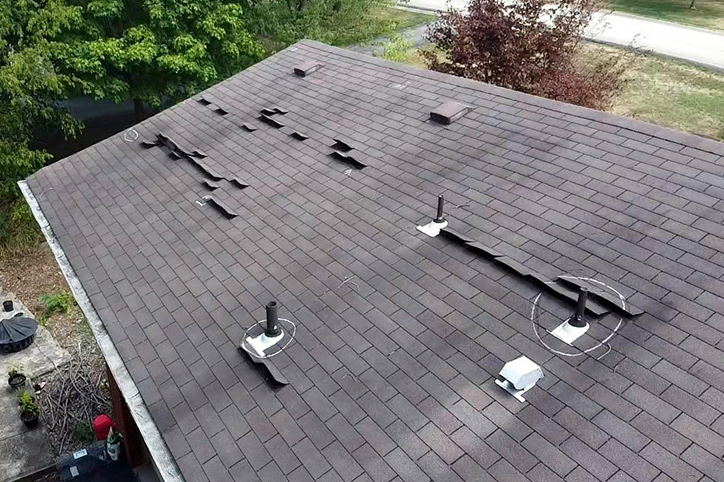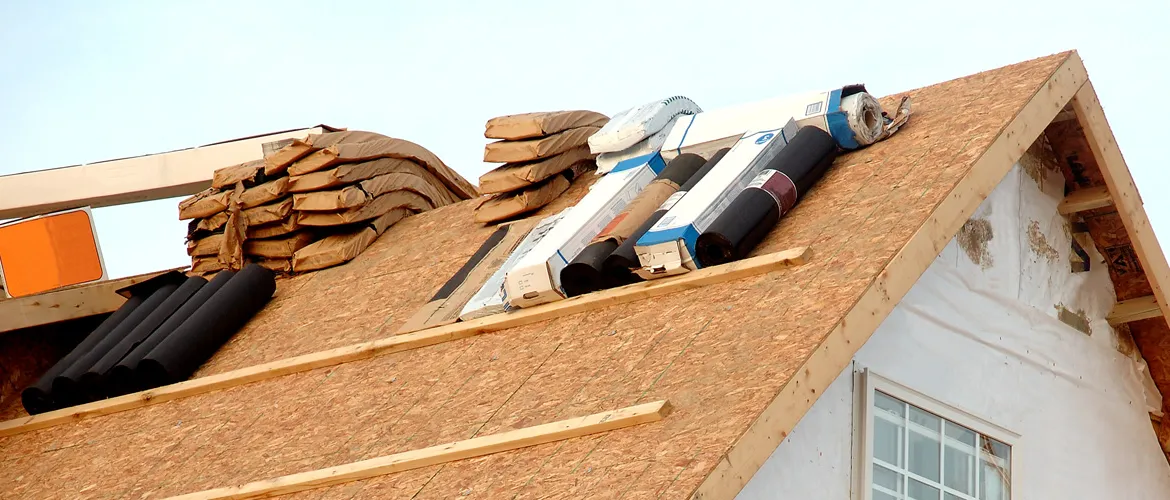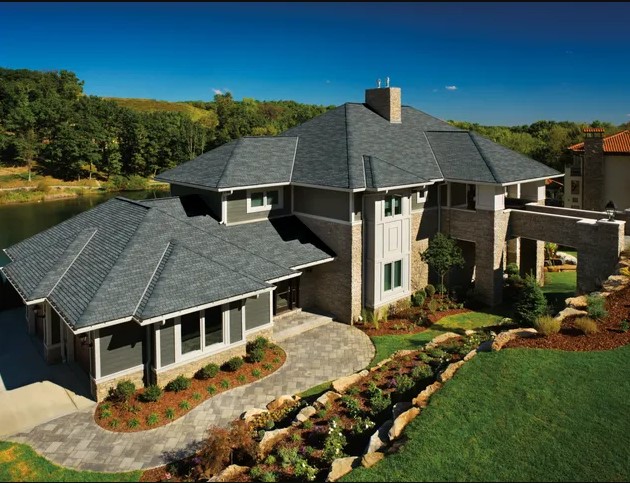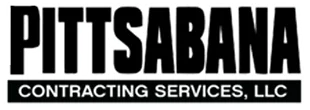If you notice that your roof is leaking, it’s time to take the problem seriously. Leaks can occur after a storm or other weather events that tend to cause roof damage. The first thing to do in this situation is to locate the source of the leaks and also observe if they have caused damage to the roof, this review you can do manually yourself taking into account the appropriate security measures for this or using the technology of a drone, which will allow you to take pictures and videos of the different areas, it will save you time and safety. It is possible that if these leaks are minor, easy to detect and are just starting, you can repair them yourself, if in the review you see signs such as water stains or deterioration in the roof, it is time to contact our specialized services. Don’t let leaks ruin your roof.
Below we recommend how to find leaks in the roof and how to repair them.
Let’s look for moisture stains on the siding or rafters.
If you check the roof, you’ll find: wet spots near the chimney or interior vents, moisture in the walls, worn and damp paint or wall surfaces, musty smell, roof not the same color or appearance, loose or broken shingles around the patio, rotted roofing, loose nails, cracked flashing, clogged gutters, mold or moss on the exterior walls (remember that leaks run down the roof, they don’t have to fall directly from where they originate). An easy way to find leaks is to use the garden hose, soaking from the highest point of the roof and do it in zones until the entire roof is complete, for several minutes, if you find it difficult start removing shingles from prone areas based on your observation, find someone to look under the roof and report if you see leaks. Another more technological way is to do it through a drone, with which you can make videos or take pictures of all the affected areas, without exposing yourself to greater risks.
What to do with a small leak
If you have a dry and clear weather is the ideal time to repair leaks, so the roof will not be affected by moisture or water, you just need the willingness to do it yourself, some tools and the necessary safety equipment for it. If you don’t feel comfortable, hire the services of a roofing contractor.
Sometimes small water leaks are caused by the results of “shiny” or nails that are out of the frame between the insulation and the top of the roof, frost builds up during cold weather outside and drips on the roofs when the frost melts, this type of repair which consists of cutting the nails “the shiny” is very simple and so no moisture builds up.
How to fix roof vents
Leaks in roofs or vents are often complicated to repair, check for cracks in plastic roofs or breaks in the metal, you can use caulking on the edges or very small holes, only if using flashing does not eliminate the leaks, this is not a long term solution, you may have to replace them . . Check for missing nails at the top of the vent, you can remove them without removing the shingles and replace them with screws with rubber washers. If the problem is in the flashings, you should replace them by finding the diameter that fits the boot, have a flat bar handy to lift the front edge of the old flashing, also lift the boot and the base of the pipe, apply roofing sealant to the underside of the flashing before installing.
Repairing Walls and dormers
Leaks do not always enter through the outside surface of the shingle covered roof, often the wind drives the rain and it enters through the siding and boards through cracks or holes, around windows walls that are mansards provide spaces where water entering the roof can cause leaks, sometimes it is because the caulk between the siding and the trim is old, cracked or missing and is not sealing the surfaces, If this is the cause of the leaks, check the affected area with a putty knife to see if it is sealed, remove the damaged mastic and replace it with a good quality one, check for damaged flashing over the flashing and replace any damaged or missing flashing, making sure the new segment overlaps at least two inches of the stepped flashing.
The roof problem is complex
This type of roof leaks during winter snowfall and summer storms, due to deficiency of flashing, because of ice buildup the water that accumulates behind the dam rises up under the shingles and soffit ( difficult to waterproof area of the roof) until it finds an exit through the roof, this is solved with a good flashing that retains ice buildup and water leakage. Start the job by removing the shingles from all the wood sheathing and run a strip of adhesive barrier against these elements, under the soffit joint, it should overlap another piece of ice and water barrier that goes underneath to the edge of the roof, thus covering the areas prone to leakage, then replace the shingles, rolling the metal flashing behind the fascia or trim, if water leaks continue for the same cause take into account installing heating cables at the edges of the roof.
Look to your trusted builder for advice, support and a quote to professionally and responsibly solve your problem. If you’re in the market for new roofing in Ross Township, PA, turn to Pittsabana Contracting Services LLC. This local roofing company employs team members who are certified by CertainTeed and committed to delivering premium service on every job, from repairing storm-damaged commercial buildings to fully replacing residential roofs. Call (412) 580-6567 to speak with a friendly staff member to schedule service or visit the website to learn more about how they’ll help you.






